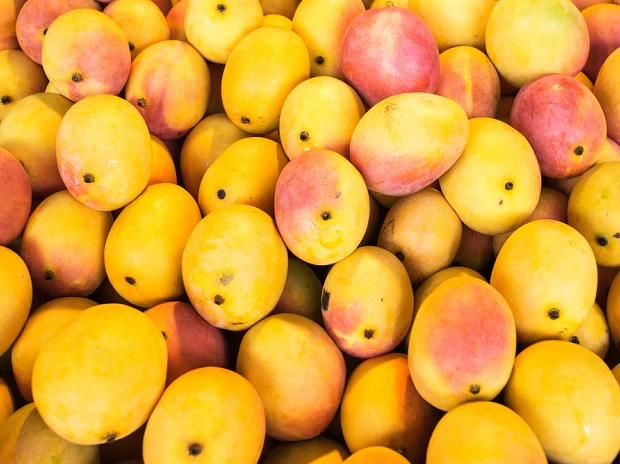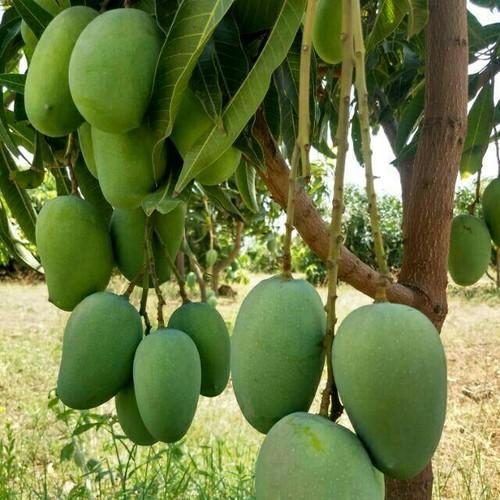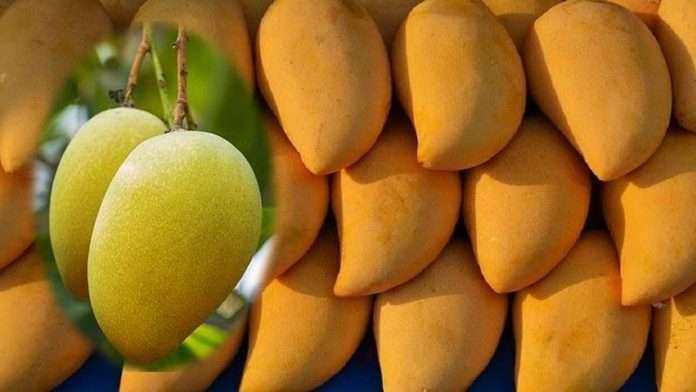Mango is an edible store fruit. Its botanical name is Magnifier Indica. It is a tropical fruit that is believed to have originated in Myanmar, Bangladesh, and northeastern India. Mango has been cultivated in the south and southeast. Asia since ancient times. Mango fruit varies in size, shape, sweetness, skin colour, and flesh colour which may be pale yellow, gold, green, or orange. Mango is the national fruit of India, Pakistan, and the Philippines. The mango tree is the national tree of Bangladesh.
The English word mango originated from the Portuguese word mango. Mango trees grow to (98131. ft) tall with a crown radius of (3-49ft). The trees are long-lived as some species still give fruit after 300 years. In deep soil, the root of the mango tree descends to a depth of 20 ft. The leaves are over green, alternate, and simple. The flowers are produced in terminal panicles. Over 500 varieties of mangoes are known. Mangoes ripen in summer. It is summer’s gift to Humanity.

The fruit trees take four to five months to ripen. The ripe fruit varies in size, shape, colour, sweetness, and eating quality. Mangoes are variously yellow, orange, red, or green, mangoes have hard seeds. Mango trees grow reality from seeds. The generation rate is the highest.
From tropical Asia, mangoes are introduced to East Africa by Arab and Persian traders in the 9th and 10th centuries. In the 14th century more…… travelers the Batuta reported it to Mogadishu. During the colonial era, it was spread into other areas around the world. The Portuguese Empire spread the mango from goa to east and west Africa. It spread to Brazil, the Caribbean, and eastern Mexico. The Spanish Empire also introduced mangoes directly from the Philipines to western Mexico. Mangoes were introduced to Florida in 1833.
Mango is now cultivated in tropical and warmer climates – in South Asia, south-east Asia, and east and west Africa. An important breakthrough in mango cultivation is the use of potassium nitrate and ethereal to induce flowering in mangoes.
The discovery was made by the Horticulturist Ramon Barbe in 1974. It allowed mango plants to have regular flowering and fruiting year-round previously mangoes were seasonal.

The mango has a traditional context in the culture of South Asia. The Mauryan emperor Ashoka instructed in his edicts for planting fruit and shade-bearing trees along the imperial roads.
On the roads banyan trees were caused to be planted by me, (in order that) they night afford shade to cattle and men (and) mango groves were caused to be planted.
In medieval India, the poet Amir Khusro praised mango as the forest fruit of Hindustan the Delhi Sultanate also enjoyed mango. The Mughal emperor Babar liked the Mangoes of India. The Mughals were very fond of fruits. The Indian Goddess Ambica is represented as sitting under a mango tree. Mango blossoms are used in the worship of the goddess Saraswati. Mango leaves are used to decorate archways and doors in Indian houses during weddings pujas and celebrations. Mango trees are sacred to India.
(The views expressed are the writer’s own.)

Radhakanta Seth is a former Income tax officer in Sambalpur. He is a freelance writer and his articles have been published in some Oriya dailies like Sambad, Samaj, Dharitri, and English dailies like The Telegraph and in a sociological journal ‘Folklore’ published in Kolkata.
He can be reached at [email protected]

